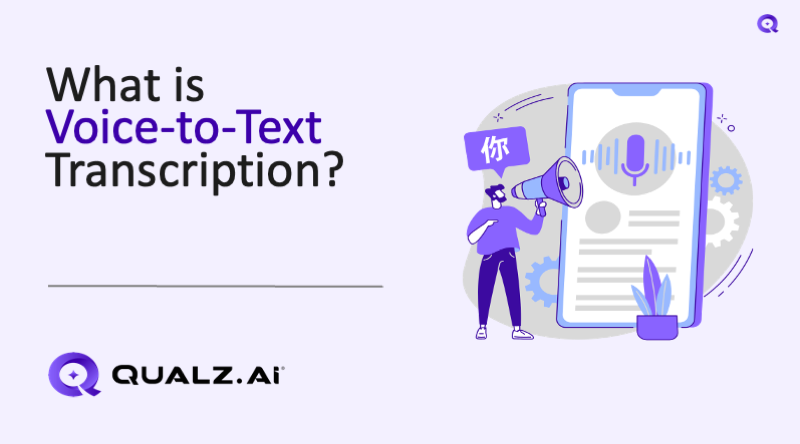In the world of qualitative research, capturing voices isn’t enough—those voices need to be transformed into meaningful, analyzable content. Whether you’re conducting interviews, running focus groups, or collecting field audio, the ability to transcribe speech into accurate, structured text is foundational to your analysis.
That’s where voice-to-text transcription steps in.
Topics Covered
ToggleFor academic researchers, independent analysts, market research professionals, and non-profit organizations, this technology offers an efficient, scalable way to streamline research and extract deeper insights—without compromising quality.
What is Voice-to-Text Transcription?
Voice-to-text transcription is the process of converting spoken language into written text. In research, it’s commonly used to transcribe interviews, focus groups, oral histories, and observational recordings for analysis and reporting.
Historically, transcription was a manual, labor-intensive task. Today, AI-driven tools such as Google Speech-to-Text and Qualz.AI automate this process with accuracy rates of up to 95% under optimal conditions. Researchers can now transcribe large volumes of qualitative data in minutes, rather than hours or days.
Why Voice-to-Text Transcription Matters in Research
1. Drastically Increases Speed
Manually transcribing one hour of audio can take 4 to 6 hours. AI-powered transcription reduces that to under 10 minutes. This time savings is particularly valuable for projects involving dozens or hundreds of recordings.
2. Elevates Accuracy and Consistency
Modern voice-to-text systems utilize Natural Language Processing (NLP), deep learning, and context-aware modeling to deliver transcriptions that are not only accurate but also include features like
- Automatic speaker identification (diarization)
- Intelligent punctuation
- Support for multiple languages and dialects
For instance, Rev.com reports that AI transcripts can achieve over 90% accuracy when recorded in controlled environments and even more when supplemented with human review.
3. Supports In-Depth Analysis and Visualization
Transcripts are the foundation for qualitative coding, thematic analysis, and evidence-based reporting. By transcribing audio:
- Researchers can apply frameworks like Grounded Theory, Thematic Analysis, and Narrative Inquiry
- Text data becomes indexable, enabling keyword analysis, quote tagging, and concept mapping
- Platforms like Qualz.AI automate open coding, theme categorization, and interactive dashboards for real-time insights
Common Use Cases for Voice-to-Text Transcription
Academic Researchers: In academia, qualitative methods like interviews and ethnographies are core to disciplines such as sociology, psychology, education, and anthropology. Transcription enables:
- Rigorous, traceable documentation for reproducibility and citation
- Efficient literature review and cross-comparison
- Accessible research archives for future studies or peer validation
Transcription also promotes critical reflexivity—researchers often identify new insights during transcript reviews that were missed during live interviews.
Independent Researchers: Solo researchers, consultants, and doctoral candidates benefit from transcription tools that:
- Eliminate the need for outsourcing
- Allow faster data turnaround
- Improve research quality through systematic documentation
AI transcription makes independent research more agile and scalable—essential in time-bound thesis work or grant-funded studies.
Market Researchers: Brands and agencies use transcription to unlock deeper consumer understanding from:
- Focus groups
- One-on-one interviews
- UX testing and customer feedback loops
Non-Profits and NGOs: Organizations working in the field often collect rich stories through:
- Humanitarian interviews
- Participatory action research
- Monitoring and evaluation programs
Transcription enables them to:
- Translate voices into powerful case studies and policy briefs
- Comply with ethical documentation and data retention standards
- Collaborate across teams, languages, and regions
Conclusion
In today’s fast-paced, insight-driven research world, voice-to-text transcription is more than a convenience—it’s a catalyst for better, faster, and more accurate qualitative research.
By transforming raw audio into structured data, transcription enables researchers to move quickly from recording to revelation. Whether you’re collecting stories in a refugee camp, testing a new product with users, or conducting interviews for a PhD thesis, transcription turns voices into evidence—and evidence into action.
If you’re ready to future-proof your research process, explore platforms like Qualz.AI, which combine transcription, analysis, and ethical AI in one intuitive dashboard.
